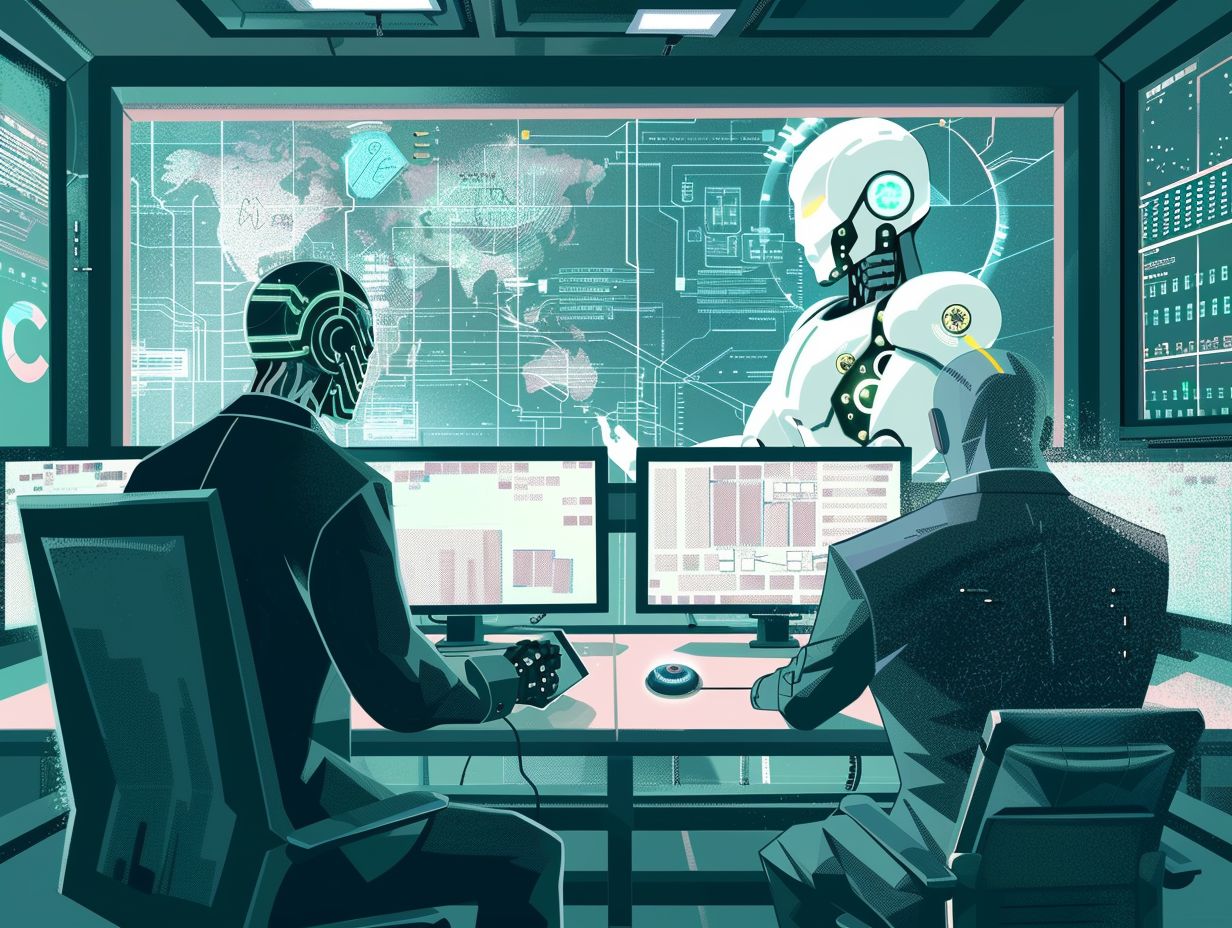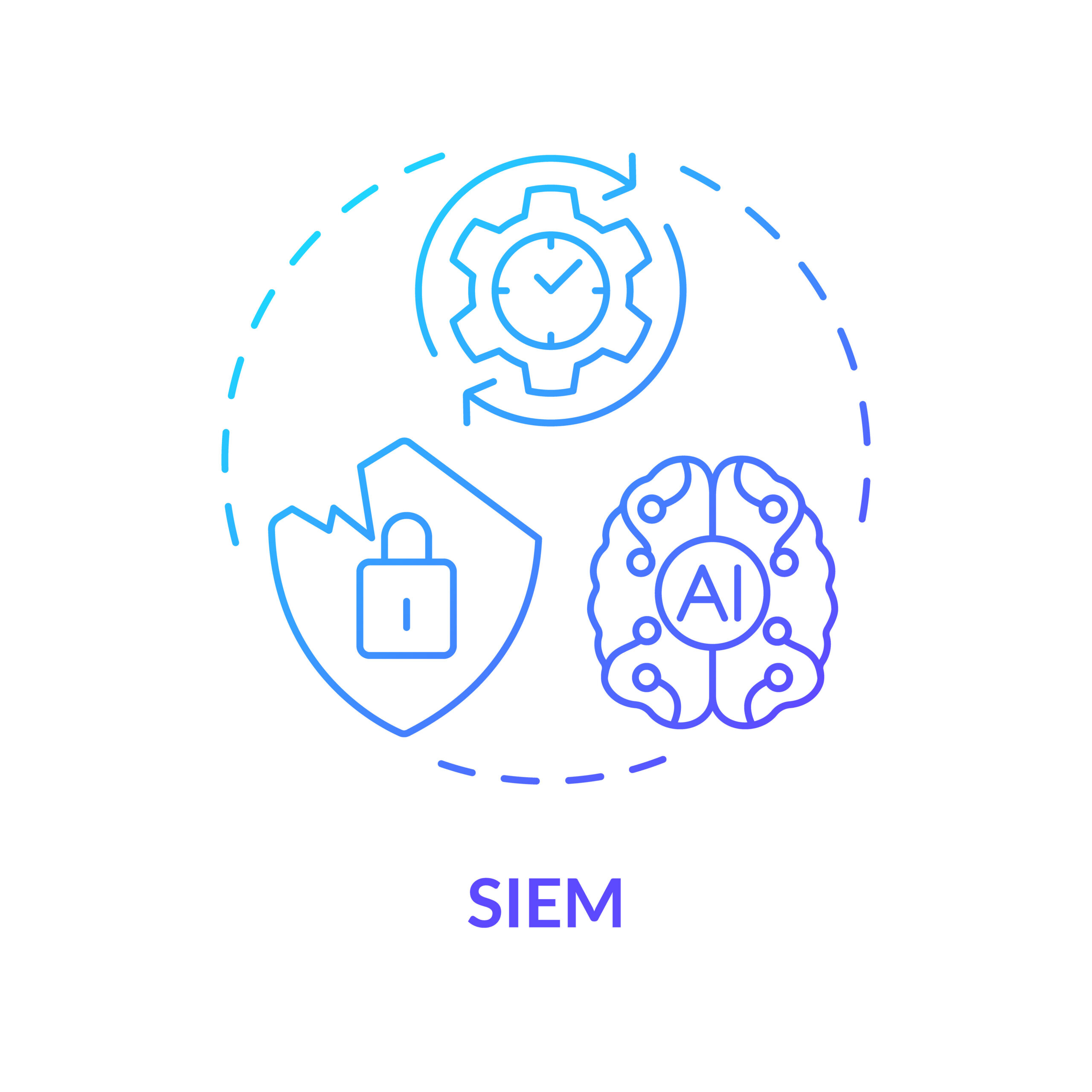Artificial Intelligence and Cybersecurity have become increasingly intertwined in recent years, with AI playing a crucial role in enhancing business security. The benefits of AI in cybersecurity for you include improved threat detection and response, as well as efficient risk assessment. However, it is important to address challenges such as potential biases and limitations of current AI technology.
Looking towards the future, the potential developments and applications of AI in cybersecurity hold great promise. Implementing AI in cybersecurity requires best practices to ensure ethical and responsible use. This article explores the dynamic relationship between AI and cybersecurity, highlighting both advantages and challenges for you to consider.
Key Takeaways:

Defining Artificial Intelligence and Cybersecurity
The utilization of advanced algorithms and machine learning techniques in the realm of cybersecurity to fortify digital defenses and combat cyber threats effectively is known as Artificial Intelligence (AI). Cybersecurity encompasses the practices and technologies designed to safeguard digital systems, networks, and data from malicious attacks.
In cybersecurity, AI plays a crucial role by analyzing vast amounts of data in real-time to detect anomalies or potential risks, enabling proactive threat mitigation. Key terminology in cybersecurity includes terms like encryption, firewall, penetration testing, and incident response, which are all essential components in securing digital assets.
The integration of AI in cybersecurity operations enhances security measures by providing rapid threat detection, automated responses, and adaptive defense mechanisms. This makes AI a critical ally in the ongoing battle against evolving cyber threats.
The Role of AI in Cybersecurity
Incorporate AI into your cybersecurity practices to revolutionize your approach. Utilize proactive solutions to detect, analyze, and respond to evolving cyber threats effectively. By harnessing machine learning algorithms, AI can improve threat detection capabilities and strengthen the resilience of digital networks against advanced cyber attacks.
How AI is Used to Enhance Business Security
The integration of AI technology in business security frameworks enables you to deploy advanced cybersecurity measures that proactively identify and mitigate potential threats. By leveraging AI applications, your organization can fortify its digital infrastructure, analyze data patterns, and enhance anomaly detection processes to safeguard critical assets.
This proactive approach not only bolsters your defense mechanisms but also allows you to stay one step ahead of cyber attackers. AI-powered security solutions continuously learn and adapt to evolving threats, providing real-time monitoring and response capabilities that traditional security systems may lack. AI technologies automate routine tasks, freeing up security personnel to focus on more strategic initiatives, ultimately increasing operational efficiency and reducing response times in the event of a security breach.
Benefits of AI in Cybersecurity
Utilizing AI in cybersecurity initiatives provides a range of advantages for your organization. These include the capability to proactively identify insider threats, detect advanced phishing attacks, perform predictive analysis on emerging trends, and improve the overall cybersecurity posture of your business.
Improved Threat Detection and Response
 AI-driven systems have significantly enhanced threat detection and response capabilities in cybersecurity operations by autonomously identifying potential threats, analyzing system logs, and orchestrating timely responses to mitigate security breaches.
AI-driven systems have significantly enhanced threat detection and response capabilities in cybersecurity operations by autonomously identifying potential threats, analyzing system logs, and orchestrating timely responses to mitigate security breaches.
These advancements in AI technologies have revolutionized the way cybersecurity professionals combat cyber threats. By utilizing machine learning algorithms, AI systems can continuously monitor network traffic patterns, detect anomalies, and alert security teams in real-time, allowing for proactive threat mitigation. AI tools have streamlined the process of analyzing vast amounts of system logs, identifying patterns of suspicious behavior, and determining the severity of potential threats. This not only saves valuable time but also improves the accuracy and efficiency of threat management strategies.
Efficient and Accurate Risk Assessment
Utilize AI-powered risk assessment tools to enable your organization to conduct in-depth analysis of data patterns, identify anomalies, and assess potential vulnerabilities with unprecedented efficiency and accuracy, thereby strengthening your overall risk management strategies.
These tools leverage advanced algorithms to sift through massive amounts of data in real-time, pinpointing unusual behaviors or activities that may indicate a security threat. By automating the process of risk identification, AI streamlines cybersecurity operations and enhances proactive threat prevention. This technology can detect subtle deviations from normal behavior that human analysts might overlook, making it a valuable asset in mitigating risks before they escalate.
AI continuously learns from new data inputs, improving its ability to adapt to evolving cybersecurity landscapes and combat emerging threats effectively.
Challenges and Limitations of AI in Cybersecurity
Despite the transformative impact of AI implementation in cybersecurity, you may encounter challenges and limitations. These can include potential biases in algorithmic decision-making, vulnerabilities in AI technology, and inherent limitations of current AI systems.
Potential Biases and Vulnerabilities
The presence of potential biases in AI algorithms and vulnerabilities in AI systems pose significant challenges to the effectiveness and reliability of cybersecurity measures, warranting a critical examination of AI technologies to mitigate these risks.
These biases and vulnerabilities can lead to serious consequences such as incorrect threat detection or exposure of sensitive information. Proactive measures must be taken to address algorithmic biases, such as ensuring diverse datasets for training AI models and regularly testing for bias detection. Vulnerabilities in AI systems should be continuously monitored and patched to prevent potential cyber attacks exploiting these weaknesses.
It is crucial to establish trust in AI-powered cybersecurity frameworks by promoting transparency, accountability, and ethical use of AI technologies in detecting and responding to security threats.
Limitations of Current AI Technology
In the realm of AI technology in cybersecurity, you encounter specific limitations that hinder its effectiveness. These limitations include difficulties in adapting to swiftly evolving cyber threats, accurately interpreting contextual nuances, and effectively addressing unforeseen security challenges.
These constraints arise from the inherent difficulty of instructing AI systems to comprehend the constantly changing tactics employed by cybercriminals, resulting in gaps in threat detection. Furthermore, the intricacy of interpreting subtle contextual cues presents challenges in making swift and accurate decisions. The reactive nature of current AI technology also poses a risk in responding proactively to emerging security issues, often relying on historical data rather than real-time situational awareness.
Future of AI in Cybersecurity

The future of AI in cybersecurity holds significant promise, with continuous advancements paving the way for innovative developments in threat intelligence, predictive analytics, and adaptive security applications that anticipate and counteract emerging cyber threats.
Potential Developments and Applications
The anticipated advancements in AI technology within the cybersecurity domain are poised to revolutionize threat detection methodologies, streamline incident response workflows, and introduce novel applications that enhance the resilience and adaptability of cybersecurity frameworks.
The integration of AI algorithms in cybersecurity is expected to lead to more sophisticated threat detection capabilities by enabling systems to proactively identify potential risks and vulnerabilities before they are exploited. AI-driven incident response optimization tools are projected to significantly reduce response times to cyber incidents, ultimately minimizing the impact of breaches. As AI continues to evolve, innovative cybersecurity applications like autonomous threat hunting and behavior analytics are anticipated to reshape how organizations defend against evolving cyber threats.
Best Practices for Implementing AI in Cybersecurity
Implementing AI in cybersecurity requires a dedication to ethical and responsible use of AI technologies. This commitment is essential to uphold data privacy, transparency, and accountability standards, thereby ensuring the integrity and trustworthiness of cybersecurity operations.
Ensuring Ethical and Responsible Use
Maintaining ethical standards and ensuring responsible use of AI technologies in cybersecurity operations are paramount for fostering trust, accountability, and transparency in digital security practices. A proactive approach is required to address ethical dilemmas and data governance concerns.
By upholding ethical standards, you can build credibility with stakeholders and mitigate potential risks associated with unethical practices. Transparency is crucial in establishing trust, as it allows for clear communication of how AI is being utilized and ensures compliance with regulatory guidelines. Implementing robust data governance frameworks is essential to safeguard sensitive information and maintain privacy, while also promoting accountability in handling data. Emphasizing ethical considerations within cybersecurity strategies not only protects against potential legal consequences but also upholds the integrity of your organization’s reputation in the digital landscape.
Frequently Asked Questions
What is the intersection of AI and cybersecurity in enhancing business security?

The intersection of AI and cybersecurity refers to the use of artificial intelligence technologies in strengthening and improving the security of businesses against cyber threats and attacks.
How does AI benefit cybersecurity in businesses?
AI offers numerous benefits in cybersecurity for businesses, such as real-time threat detection and response, automated patching and updates, and advanced data analysis for identifying and preventing potential attacks.
What are some examples of AI-powered cybersecurity solutions for businesses?
Some examples of AI-powered cybersecurity solutions include machine learning-based intrusion detection systems, intelligent firewalls, and AI-driven vulnerability assessments.
Can AI completely replace human involvement in cybersecurity for businesses?
No, AI cannot replace human involvement in cybersecurity entirely. While AI can automate certain processes and tasks, human expertise and decision-making are still necessary for managing and addressing complex cyber threats.
How can businesses ensure the ethical use of AI in cybersecurity?
To ensure ethical use of AI in cybersecurity, businesses should establish clear guidelines and processes for data collection, storage, and use, as well as regularly audit and monitor AI systems for any potential biases or discrimination.
What are the potential risks of AI-powered cybersecurity for businesses?
Potential risks of AI-powered cybersecurity include overreliance on technology, lack of transparency in AI decision-making, and the potential for AI systems to be hacked or manipulated by cybercriminals.











